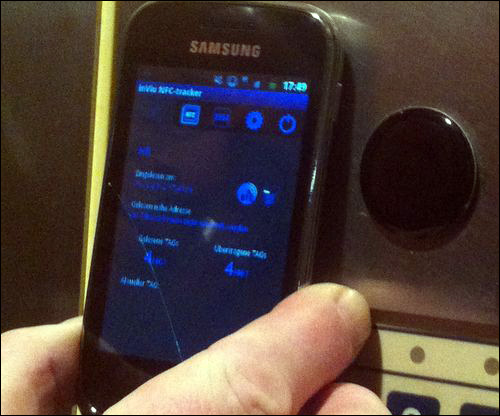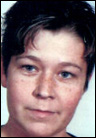Berlin’s Bergische Bewachungsgesellschaft mbH (Bergische Security Co.) is employing Near Field Communication (NFC) passive radio frequency identification tags and mobile phones to provide visibility into the movements of its security officers at clients’ sites. The InViu NFC-tracker system was provided by German tracking and monitoring solutions firm Enaikoon. The solution enables officers to tap a smartphone against tags installed through the buildings they monitor, thereby creating a digital record of where they go and when, in addition to issuing alerts to be sent if they fail to complete expected tasks.
The system enables the company to provide data regarding the officers’ movements to clients, according to Evelyn Neuhaus, Bergische Security’s owner. What’s more, it’s low-cost, since there is no need to purchase hardware, such as RFID readers. Instead, security guards simply utilize RFID-enabled mobile phones and pay a monthly fee to access hosted data.

Until last year, the company employed a guard-monitoring system with a bar-code scanner, as well as an RFID reader shaped like a pen and known as a “proxy pen.” Guards could use that system to scan bar-code labels affixed to various points along the routes they patrolled, as well as read RFID tags in some cases. The collected data was stored on the handheld reader or scanner, or transmitted wirelessly to the company’s control center. Beginning in 2009, the firm began outfitting its service vehicles with GPS-based devices provided by Enaikoon, with the GPS data managed by InViu software.
In 2011, when the existing guard-monitoring system was discontinued, Bergische began seeking another solution to track guards on foot. GPS, while useful on vehicles, was not an option since the guards would often be indoors. Enaikoon offered an NFC solution that was a fraction of the cost of the other RFID-based options, since it requires only RFID tags and NFC-enabled phones. Additionally, Enaikoon’s software platform could integrate guards’ NFC-based data with the vehicle-tracking GPS data.
With the solution in place, Bergische Security applies Enaikoon’s NFC RFID tags, made with NXP Semiconductors‘ Mifare 1K classic chips, at key locations within its clients’ facilities. The tags are small, says Marie Dennis, Enaikoon’s international account manager, and are placed in such a way that they will have little visual impact for those using the building. Bergische Security supplies its officers with Samsung Galaxy Mini 2 NFC-enabled mobile phones. For each phone, a user must download Enaikoon’s InViu NFC-tracker app from Google Play Web site. After the phone reads a tag, the NFC-tracker app uploads the tag ID number to Enaikoon’s server, where the InViu software interprets the data and creates a record of each read for management, either for its own use or to share with clients.
The tracking begins when an officer enters one of Bergische Security’s service vehicles, in order to drive to the assigned client’s site. As the vehicle starts to move, GPS data from that vehicle is received by the Enaikoon software, indicating when the vehicle has departed. Upon arriving at the work site, the officer begins completing the necessary rounds, walking through the facility at pre-arranged intervals. The guard inputs a personal PIN into the mobile phone to link his or her ID with that phone, and taps the phone against each NFC tag passed. Each tag is encoded with a unique ID number that the InViu server’s software links to data regarding that tag’s location. After reading the ID number, the phone then forwards that ID, along with the user’s PIN, to the InViu server, where the phone and tag IDs are linked and stored.
Security management can then review details indicating when a specific guard was at a particular location, either during that same shift, or for historical purposes—for example, to prove the guard’s movements to a client.
Bergische Security can configure the software to expect each tag to be read within a specified span of time, and to issue an alert in the event that an exception occurs. For instance, if a tag is not read, indicting that a guard may have missed a checkpoint on his or her rounds, the software will send a text or e-mail message to authorized parties. Moreover, Dennis says, if a guard calls in with a problem, the system displays where that individual was most recently located, based on the RFID read data, in order to help identify his or her location.
The greatest shortcoming for guards, Dennis notes, is the use of phones as opposed to handheld readers. “Employees complain that the mobile phones are not robust enough,” she states. Ideally, she says, she would like to have an NFC-enabled mobile phone for outdoor use that could be operated in the rain and other harsh weather. Despite that fact, however, the tags themselves are easier to use within outdoor environments than bar codes, which could be damaged or made inoperable when wet.
“Using the RFID system to read the control points happens faster and, unlike bar codes, regardless of weather conditions, so the security force save two to 10 seconds at each reading,” Dennis says, when compared with a bar-code scan. “The contactless reading means there is no wear and tear at the control points, and the cost of replacement parts can be saved.”
According to Neuhaus, the company’s clients gain from the monitoring system, and from knowing that Bergische Security is actively monitoring its officers. “Our clients expect services that are verifiable,” she states, “and with the Enaikoon system, we are able to present our activities to the clients and demonstrate what was completed.”
During the past five years, Dennis says, Enaikoon has been offering other high-frequency (HF) 13.56 MHz RFID-based solutions, but in the past year, the firm began offering the NFC version of the system to be used with Galaxy Mini 2 NFC-enabled phones, which the company recommends simply because it is affordable and works well. The phone allows businesses to track employees and assets without investing in dedicated RFID readers. NFC technology, she adds, is a preferable alternative to QR codes, which can be copied by staff members (enabling them to read the codes without actually visiting the site), while NFC RFID tags cannot be easily duplicated.
Users can purchase the tags from Enaikoon, which encodes an ID and links that number to the location where the tag is installed. They can also buy the NFC-enabled smartphone from Enaikoon (the company recommends Samsung Galaxy Mini 2 mobile phones). Alternatively, users can acquire the phones on their own, as long as they choose an NFC-enabled smart phone running the Android operating system (version 2.3.3 and up).



